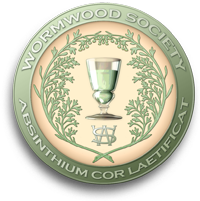
Absinthe: The Rise, Fall and Resurrection of the Green Fairy
Absinthe As Wished For
Thujone gets a lot of sensational press on the fringes of the absinthe world. Given the events of the cusp of the 1960’s and 1970’s, warnings about hallucinations strike a familiar note to the hopeful “inner-space” explorer—in fact that seems to be the one bit of information upon which many focus, blithely ignoring the foaming at the mouth, explosive incontinence and the seizures.
So begins the invention of the idea of absinthe as a psychedelic recreational drug and talk of absinthe’s “Secondary Effects.”
Regardless of how exaggerated and spurious they may have been, it seems that the early health warnings are taken as a sort of code: “We only forbid this substance because it will get you high and free your mind.” Perhaps this is partly because warnings of this type have been issued over virtually every substance that has been deemed suitable for recreational use and/or consciousness alteration. In the popular and uninformed imagination, absinthe is a dark and forbidden addictive drug, like opium, perhaps consumed in “absinthe dens.” As romantic and seductive as that notion may be, it is of course founded on myth and misinformation.
This confusion was not helped when, in 1975, del Castillo et al. suggested that the geometric similarity between the thujone molecule and that of tetrahydrocannabinol (THC) might indicate similar effects by activating the same receptors in the brain. Even though this was demonstrated not to be the case as early as 1978 and again in 1998, you will still find this misinformation repeated as fact in magazine and newspaper articles, on internet forums and web sites and in private discussion. Thujone is fetishized by those seeking a new exotic high. It’s more fun than the truth, which is that absinthe is just booze, doesn’t actually contain much thujone, and it never did.
Unless one makes a study of it, one is unlikely to know just how omni-present absinthe was at its height of popularity. Let’s imagine for a moment the scene in France at the turn of the century. There were over 30,000 cafés in Paris alone. The drink of favor was absinthe, which throngs of people congregated to imbibe every day at 5:00 p.m., giving this “Happy Hour” period the nick-name l’Heure Verte, the Green Hour. Are we really expected to believe that the majority of the drinking population of France was sitting around in cafés every day, hallucinating on absinthe?
